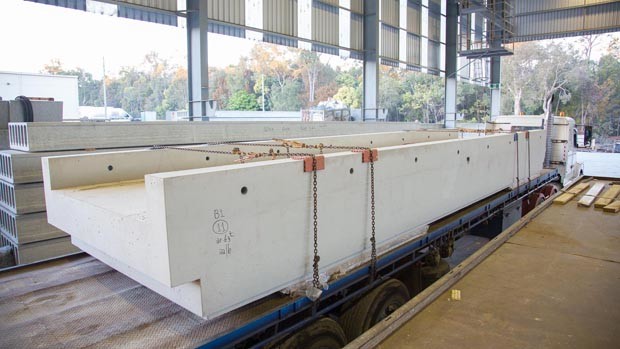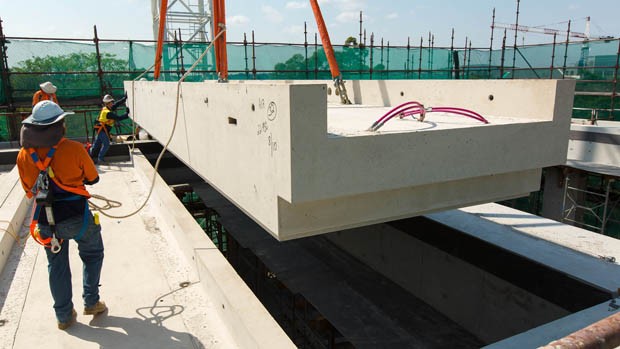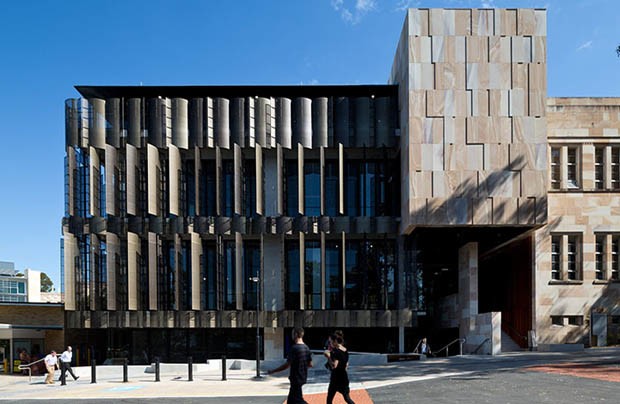The University of Queensland’s Global Change Institute (GCI), designed by HASSELL in collaboration with Bligh Tanner, Arup and Medland Metropolis, has become the first building in the world to utilise cement-free concrete for suspended construction.
Piloting various sustainable solutions in its bid to achieve 5 star Green Star Education Design and As-Built ratings, the building uses a geopolymer precast concrete that replaces cement with flyash in the mix.
Earth Friendly Concrete (EFC) is a Wagners brand name for their commercial form of geopolymer concrete, which the 33 precast floor beams in the new GCI building are made from.
Comprising sand, aggregate and a binder that contains ground granulated blast furnace slag, a waste product from steel production, and fly ash, a waste product from coal fired power generation, EFC contains no normal Portland cement. This allows it to have very low CO2 emissions as compared to normal Portland cement-based concrete.
The precast panels with cast in hydronic pipes also play an integral part of the building's low energy and passive cooling modes.

Bligh Tanner's director Rod Bligh, who led the structural and facade engineering on the project, notes that in a world where up to eight per cent of carbon emissions are being generated in the manufacture of cement, the use of geopolymer concrete for suspended construction can lead to a reduced carbon footprint in the global construction industry.
Up until this point, geopolymer has only been used in trials for ground bearing pavements, masonry blocks and other low level structural applications.
“We have taken environmentally sustainable design a step further and precast world-first geopolymer concrete floor panels which, with significantly lower embodied energy, helps to reduce the building’s carbon footprints,” says Bligh.
“Prior to the GCI project, industry experts considered that practical application in such a significant way would be many years away from happening. We’re pleased our application expedited this for everyone’s benefit.”

As well as being more environmentally friendly, the panels have faster curing times, which contribute to lowered production costs.
The different chemistry of the binder also means that the suspended geopolymer floor panels experience low shrinkage, low heat of reaction which avoids the possibility of thermal cracking, 30 per cent higher flexural tensile strength than normal concrete, and higher durability than normal concrete.

The Global Change Institute, designed by HASSELL. Photography by Angus Martin.
The innovative and pioneering use of geopolymer concrete on the project has been awarded two innovation points in the Green Building Council assessment for Greenstar rating, with the Institute itself a 6 star Green Star registered building.
“It’s the ideal home for the Institute’s game-changing research, ideas and evidence-based advice for addressing the challenges of global change,” says Global Change Institute director, professor Ove Hoegh-Guldberg.
“It will be naturally ventilated for most of the year whilst a super low energy comfort conditioning mode ensures occupant comfort in even the hottest and most humid Brisbane days.”
Images courtesy of Bligh Tanner and HASSELL

